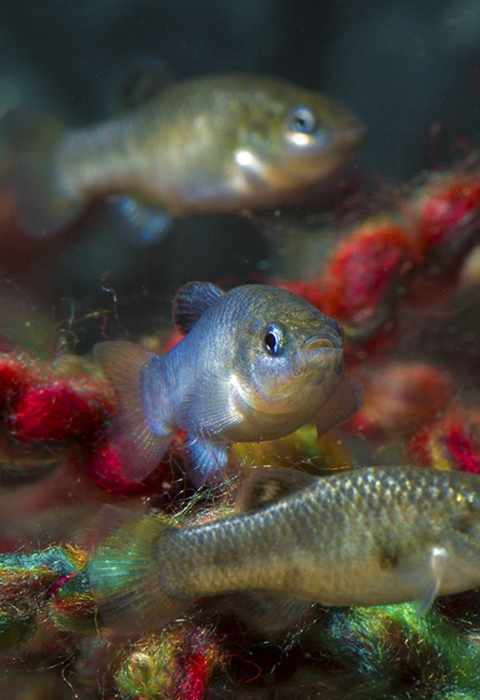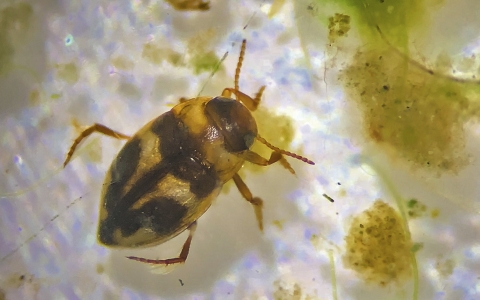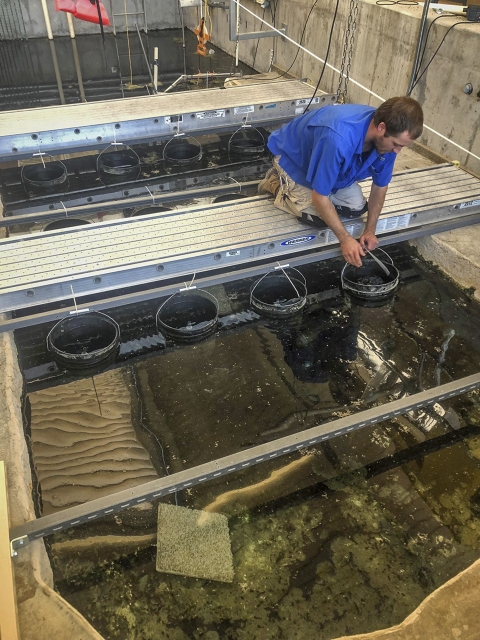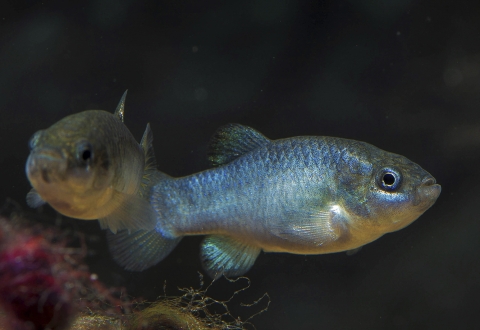One day in December 2017, U.S. Fish and Wildlife Service biologist Olin Feuerbacher was working on a Saturday at the Ash Meadows Fish Conservation Facility when he saw something that shocked him.
While reviewing a DVR recording of one of the fish tanks, he witnessed a predaceous diving beetle ripping a Devils Hole pupfish larvae to shreds. The tanks are constructed to mirror as close as possible, the pupfish's natural habitat.
“I just about fell out of my seat,” said Feuerbacher. “I watched it for a minute or so and saw it repeated. A beetle tearing apart a 2-3 millimeter larvae.”
The Service was already conducting research with the National Park Service and University of Nevada, Reno, studying beetles in petri dishes to see how often they would attack eggs or larvae – essentially proving predation.
With video proof in hand, the results were confirmed – nothing was surviving beyond four millimeters. The Service needed to take action.
The Devils Hole pupfish population dipped to only 35 identified individuals in 2013.
Although the facility has been successful in establishing a colony of pupfish in their 100,000 gallon refuge tank, predation by beetles made recovery of eggs to create a captive-raised laboratory population nearly impossible.
Within a week of employing traps built by construction-maintenance specialist Rob Barlics and based on a design from Ash Meadows Fish Conservation Facility staff, they saw immediate results.
“We went from zero to one egg in a month to over 40 in a week,” said Feuerbacher.
The first trapping attempt on March 22 removed 400 beetles. Subsequent attempts resulted in an average take of 150 beetles.
The traps were modeled on previous controlled experiments in the lab which noted that the beetles were fond of blood worms – which ultimately could be used as bait.
However, the challenges didn’t stop there.
MORE OBSTACLES
A fungal species continued to impact the fish eggs until biologists used antibiotics and antifungals to increase egg hatch rates from one percent to 40 percent recently.
The results are that the facility produced five fish during the week of June 18-22.
“With a population of only 130 fish, this is a significant accomplishment," said Feuerbacher of the five fish.
Overall, our goal is to have a healthy captive population of fish and we feel like we are headed in the right direction,” said Mitch Stanton, research associate with the Great Basin Institute. "Eliminating the stressors like the predaceous diving beetles will help promote a robust growth in the population."
Feuerbacher and Stanton have seen a continued increase in the eggs collected with the latest numbers averaging between 50-100 per week.
"The sky is the limit for us," Stanton said.









